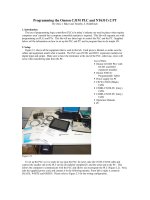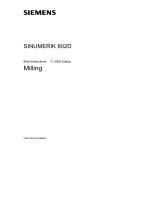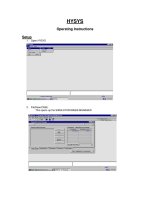Differentiated Instruction
Bạn đang xem bản rút gọn của tài liệu. Xem và tải ngay bản đầy đủ của tài liệu tại đây (3.11 MB, 53 trang )
Differentiated
Instruction
Rob Irwin
Purpose
• Develop shared and practical understandings
of differentiation as related to the effective
teaching of Mathematics
• Tiering as a differentiation strategy
• Tiering Math Games & Trailblazers lessons
Processes/Payoff
• Processes:
Question Car Park; Think, Pair, Share; Paired/
Quad Brainstorm; Games Rotations;
Discussion; Gallery Walk; Group Planning
• Payoff: Leave the workshop with practical
ideas for differentiating instruction through
the strategy of tiering
Protocols for working as a
professional learning community
• Adopt a sense of responsibility for the group as a
community of learners
• One person at a time talking so as to keep the
meaning
• Attend to and listen to others
• Accept where others are at
• Suspend judgement
• Allow and give no putdowns
• Common signal for gaining
everyone’s attention
“Question Car Park”
• Write down your
questions and issues on
the post-it notes
provided throughout the
sessions and “park”
them in the “Question
Car Park” charts on the
walls of the room.
• I will work at answering
them at the beginning of
the next two sessions.
Treasure Hunt for Diversity
Using the
Treasure Hunt
grid, complete
each section
by finding
colleagues
who match the
description.
Challenges of today’s students
• As a group, brainstorm (and jot down in your
reflective journals) all the needs of students
you have worked with in your classrooms
this year or in the past.
Challenges of today’s students
The diversity of students in
your classroom:
• “Learning styles (visual,
spatial, auditory, tactile,
kinaesthetic)
• Interests
• Strengths/ Weaknesses
• Cognitive abilities
• ELL’s
• Attitudes/ Motivation/
Persistence/ Confidence
• Readiness
• Socio-Economic and
Family Factors
• Learning Pace
• Gender Influences
• Cultural/Ethnic
influences
Challenges of Today’s Students
“Normal is only a setting on the washing
machine”
Schmidt, M (2006). Losing Sight of the Shore: Differentiating Curriculum and
Instruction.
A Once Upon A Time Story
About
AaBlonde
Once upon
time thereStudent
was a lovely, young
student named Goldilocks. She was an
adventurous sort, so one day she went
walking through the forest in search of a
teacher.
As Goldilocks rounded a bend in the path, she
came into a bright clearing in the forest. She
was very excited to find a teacher presenting
a lesson that at first captured her attention.
Goldilocks tried to stay engaged and learn,
but she became frustrated as it was just too
difficult.
The story continues…..
She sighed, waved goodbye to the first
teacher, and continued on her way.
Goldilocks walked a bit longer and ambled up a
hill where she found herself in a wide, flowerfilled pasture. There a second teacher sat,
seemingly waiting just for her.
This teacher began her lesson, but Goldilocks
soon became bored because it was just too
easy. She waved goodbye to the second
teacher, and once again went on her way.
The story continues…..again!
• Trudging through the forest more slowly now
and less joyfully, she came across a
magnificent meadow that was not only
amazingly colorful but fragrant as well.
There stood another teacher. The teacher
began the lesson, and Goldilocks was
enthralled! This lesson wasn’t too hard! It
wasn’t too easy! It was just right!
What is Differentiation?
Think, Pair, Share:
• Individually, jot down
your own thoughts as
to what you think
differentiation is.
• Share with partner.
• Share with group of 4.
What is Differentiation?
• At its most basic level, differentiating
instruction means “shaking up” what goes on
in the classrooms so that students have
multiple options for taking in information,
making sense of ideas and expressing what
they learn…a differentiated classroom provides
different avenues to acquiring content, to
processing and making sense of ideas, and to
developing products so that each student can
learn effectively” (Carol Tomlinson, 1999, p. 1)
How Is It Implemented?
• Use diagnostic assessments to determine
student readiness. These assessments can
be formal or informal. Teachers can give pretests, question students about their
background knowledge, or use KWL charts
(charts that ask students to identify what
they already Know, what they Want to know,
and what they have Learned about a topic).
How is it implemented?
• Determine student interest. This can be done
by using interest inventories and/or including
students in the planning process. Teachers
can ask students to tell them what specific
interests they have in a particular topic, and
then teachers can try to incorporate these
interests into their lessons.
How Is It Implemented?
• Identify student learning styles and
environmental preferences. Teachers can get
information about student learning styles by
asking students how they learn best and by
observing student activities. Identifying
environmental preferences includes determining
whether students work best in large or small
groups and what environmental factors might
contribute to or inhibit student learning. For
example, a student might need to be free from
distraction. PLUS you need a good understanding of M.C.
What Does it Look Like for Math?
Math instruction can be differentiated to
allow students to work on skills appropriate
to their readiness level and to explore
mathematics applications through • Math games are a very good and easy way to
differentiate learning. Played correctly
students can experience fun activities while
playing different levels of a game.
• Tiering is another way. Tier the group or
individual activities after the mini lesson.
Differentiated Instruction
is the proactive acceptance of and planning for student differences,
including their
readiness
interests
learning profiles
Teachers can respond to student differences by differentiating
content
process
products
environment
while always keeping in mind the guiding principles of
respectful tasks
ongoing assessment & adjustment
flexible groups
What is reality now and Where
you want to be: Self-Assessment
Traditional Classroom
Vs Differentiated
Classroom
Using the handout,
place an X on each
continuum where you
believe your teaching is
now and a Y where
you’d like to be.
Discuss with your group.
Tiering
as a
Differentiation Strategy:
What is it?
“Tiered activities are really
quite essential. They are
almost the meat and potatoes of
differentiation.”
(Tomlinson)
Differentiating by
Readiness/Tiered Lessons
• Involves having students work on the same
concept at different levels of complexity and
with different levels of support or openendedness.
• Not more work or less work, just different
work.
Planning Tiered Assignments
Concept to be Understood
OR
Skill to be Mastered
Create on-level task first then adjust up and down.
Below-Level
Task
On-Level
Task
“Adjusting the
Task”
Above-Level
Task
When Tiering:
Adjust--•
•
•
•
•
•
•
Level of Complexity
Amount of Structure
Materials
Time/Pace
Number of Steps
Form of Expression
Level of Dependence









